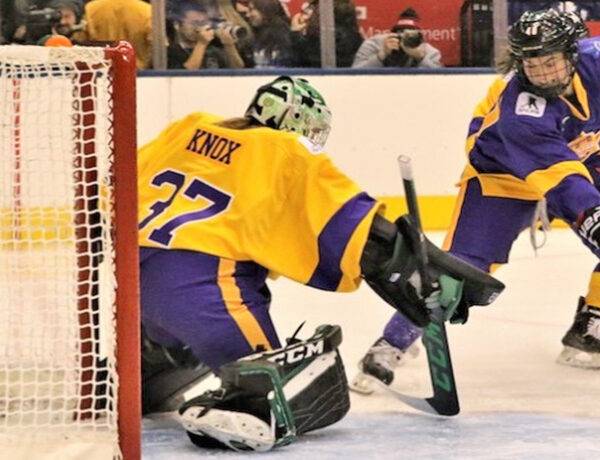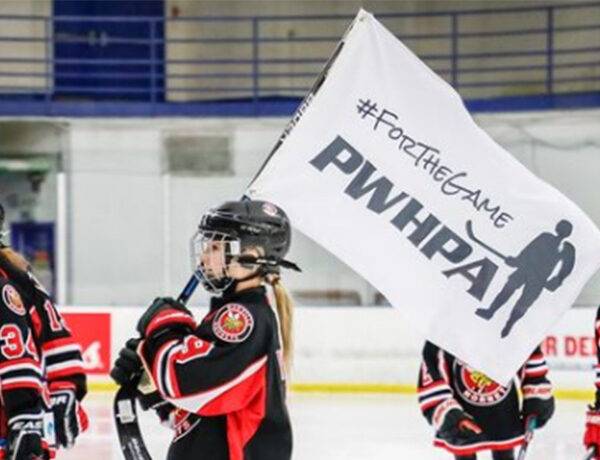Sometimes it’s the little things that can remind us about the joy of sport.
Especially for us old and somewhat jaded folks.
My youngest son, Ryder, turned nine at the beginning of August and we had some plans for the afternoon to celebrate as a family, including a trip to the local amusement park.
Those plans, however, abruptly changed when I received an email from his minor hockey association (Blackfoot Hockey) informing parents that hometown boy Brayden Point would be at one of the local rinks here in Calgary with the Cup that afternoon, and that kids were invited to drop by for a picture.
Point — a Blackfoot alumnus — was making the stop as part of his tour of the city for his day with Lord Stanley’s sacred chalice.
It just so happened that given his local roots – and recent heroics during Tampa Bay’s second straight Cup run — he was already Ryder’s second-favourite player, sitting closely behind Calgary’s Sean Monahan.
And the Lightning already had a coveted spot in our family – not for me, but my boys. As a Flames fan, I’m still bitter about 2004. IT. WAS. IN.
Some years back, courtesy of a relative of ours, Steven Stamkos surprised my oldest son Aidan by sending some signed Lightning stuff, including a picture with a nice personal message.
It arrived in the mail and after he opened it, he was an instant fan of the player and the team. This trickled down to Ryder, who considers Tampa his second favourite team, again, after the Flames.
Needless to say, he was rather excited the last two years when they won back-to-back Cups.
So when I read the email from Blackfoot I could not believe the timing. It was too perfect. When I told Ryder about Point and the Cup, he gave that look that parents adore, the one they get on Christmas morning: Sheer unbridled joy.
Of course, there’s nothing better than sharing an experience like that with a pal so we picked up his best friend Matthew and headed to the rink about 45 minutes before Point was slated to arrive. A lineup had just started forming, with everyone hoping for an autograph as well.
Point arrived a bit late but the crowd of kids erupted when he walked in and held the Cup above his head. His dad asked everyone to flood out on to the arena floor for a big group picture.
It was bedlam – but the good kind.
Ryder and Matthew managed to get close to him for the picture, Point even rubbing Ryder’s head and saying ‘Hi pal.’
After that, Point announced they had to get going as it was a packed day with tons of stops. However, outside near their rented bus, he stopped for another chat with some kids. Ryder and Matthew found their way right beside him again, both getting to touch the Cup and his ring from 2019. They were beaming.
One little guy asked Point ‘Why does the Cup smell like beer’ – leading to laughter amongst the pint-sized group that had formed around him.
He replied something along the lines of ‘you know why,’ and this time it was the dads turn to chuckle.
Needless to say, Ryder’s feet didn’t touch the ground for the rest of day – he was on Cloud 9.
I work for the Calgary Sports and Entertainment Corporation (the Flames, Stampeders, NLL Roughnecks and WHL Hitmen) as the Director of Digital Content and Social Media, and before that was in the newspaper business for nearly 20 years, most of the time in sports. I’ve spent a lot of time around pro athletes and have become numb to the experience.
Sure, I see all the work they do behind the scenes with charities and hospital visits, along with regular interactions with young fans. I know firsthand they make a big difference in a lot of young lives.
It’s special, but I think I forgot just how special till I saw it again as a dad through the eyes of my child.
On my first trip down to Tampa after I joined the Flames, I found a few minutes to chat with Stamkos in the Lightning dressing room after his media scrum to thank him. I recounted the story of what he did for Aidan and how that small act of kindness made my child a lifelong fan. He was gracious and smiled when I explained the details, and I’m sure he’s heard a thousand similar stories in his life.
I hope I have the chance in the future to tell Point what that one day and quick exchange meant to a nine-year-old who idolizes him, on his birthday nonetheless.
And also what it meant to me.
The post Another Point on Why I Love Hockey appeared first on Elite Level Hockey.


























